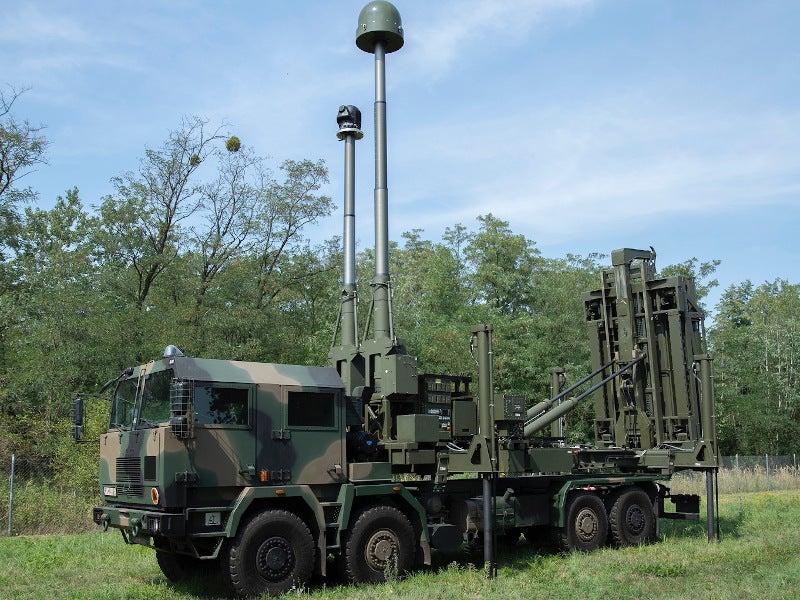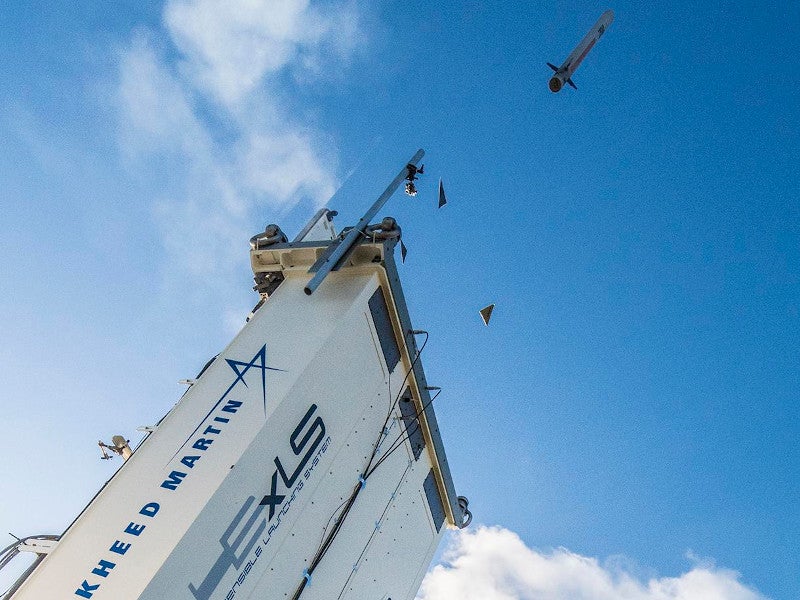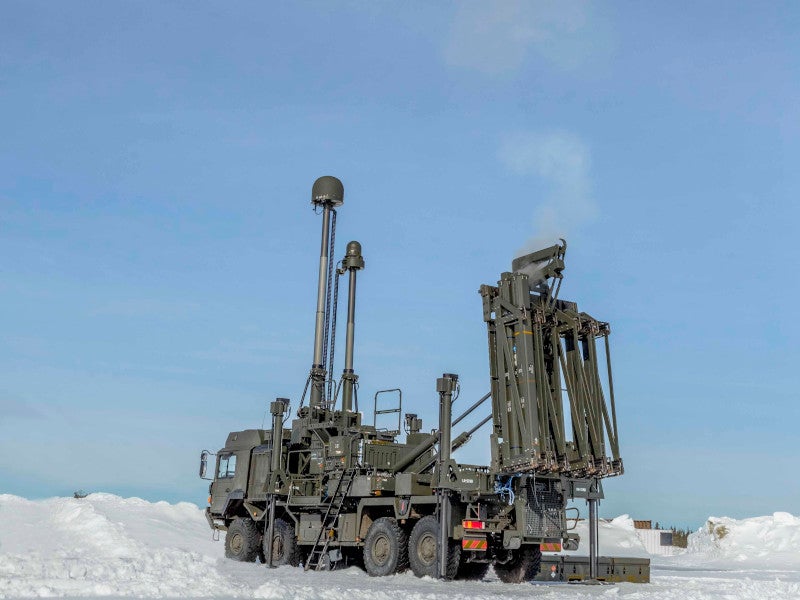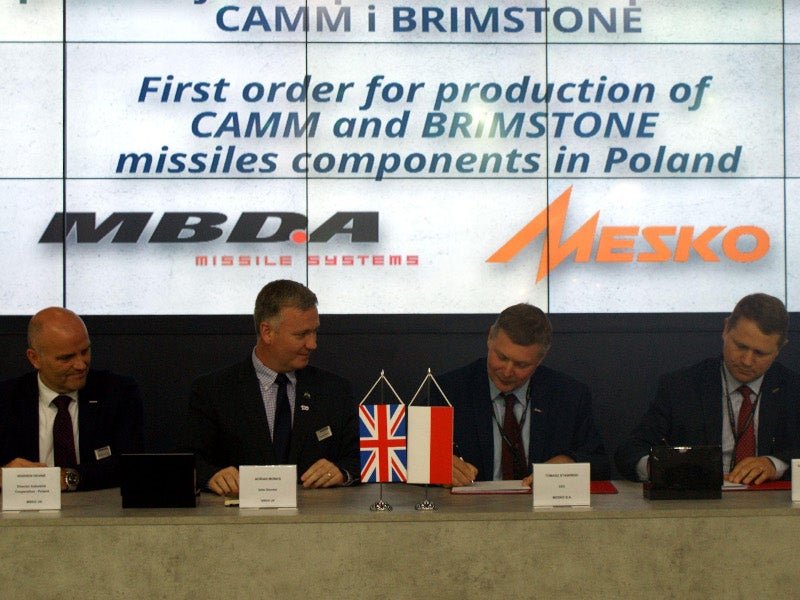Common Anti-air Modular Missile (CAMM) is an advanced air defence missile designed and manufactured by MBDA for deployment in the land, air, and sea domains.
CAMM is capable of providing protection from aircraft, anti-ship cruise missiles, and other highly sophisticated threats. Installed with advanced technologies, the missile offers protection against known and expected air targets. The missile is operational with the Royal Navy as part of the Sea Ceptor weapon system aboard the Type 23 frigates. Designed as a replacement for the navy’s ship-based air defence system VL Seawolf, the missile will also be installed on the future Type 26 frigates.
The anti-air missile will also improve the British Army’s land-based air defence capabilities, replacing its ageing Rapier weapon system. The land configuration of CAMM is deployed using the Land Ceptor system.
In addition, the technology used in CAMM will be leveraged in the development of a replacement for the Royal Air Force’s ASRAAM missile.
CAMM development details
The origins of the Common Anti-Air Modular Missile can be traced back to 2004 when MBDA secured a technology development programme (TDP) from the UK Ministry of Defence (MoD).
The first phase of the MBDA-led programme matured technologies, including the new low-cost active radar seeker, a programmable open systems architecture, and a dual-band two-way datalink. During the second phase, which began in 2008, the company and its partners worked on the manufacturing of subsystems, as well as soft vertical launch tests, mid-course guidance firings, and captive seeker trials on a test aircraft.
A series of trials were conducted to prove the capabilities of the soft vertical launch while the business case for the naval variant of the Future Local Area Air Defence System (FLAADS) was approved in 2011.
The MoD awarded a £483m ($759.39m) contract to MBDA to develop Sea Ceptor, in January 2012. CAMM was selected for the Royal New Zealand Navy’s (RNZN) upgrade of the Anzac-class frigates. Brazil also preferred the CAMM-based Sea Ceptor weapon system for the future Tamandaré-class frigates.
Thales UK signed a contract to supply the laser proximity fuse for the CAMM missile. MBDA and Thales agreed to expand their cooperation after more than five years of collaboration on the concept and assessment phase of FLAADS/CAMM. Thales supported the CAMM demonstration project in aspects such as structural analysis, assessing and modelling thermal management within the missile, and producing missile components using precision manufacturing techniques.
MBDA received a £323m ($413.6m) contract to provide the CAMM missiles to equip the British Army and Royal Navy, in April 2017.
MBDA and Lockheed Martin completed the qualification trials of the weapon from the latter’s three-cell extensible launching system (ExLS) launcher, in April 2018. Land Ceptor, which includes CAMM as the core system, successfully destroyed the target during a demonstration firing in May 2018.
In November 2019, Northrop Grumman and MBDA showcased the ability to integrate CAMM missile into the Integrated Air and Missile Defence (IAMD) Battle Command System (IBCS).
MBDA signed a global missile supply chain agreement with MESKO for the production of CAMM family components in Poland in September 2019.
MBDA and PGZ displayed an air defence solution that integrated CAMM iLauncher into the Polish Jelcz 8×8 truck chassis at the MSPO international defence industry exhibition held in Targi Kielce in 2019.
Common Anti-air Modular Missile design and features
CAMM has a length of 3.2m, a diameter of 166mm, and weighs 99kg. It can be operated either as an individual unit or integrated with a battlefield vehicle.
The supersonic missile is installed with an active RF seeker with clutter rejection capabilities to ensure enhanced performance in all weather conditions. The seeker avoids the need for dedicated fire control/illumination radars. The missile offers a high probability of destroying the target as it is extremely agile and possesses a lethal warhead and advanced fusing package.
The soft vertical launch technology reduces the weight of the system and enables flexible installation, while the command and control system supports integration into existing or new naval combat systems.
The missile incorporates a lightweight and compact design, allowing multiple units to fit in limited space and transportation by conventional wheeled vehicles. It has two-way data link between the missile and launcher. The soft launch technology also offers a 360° air defence capability and reduces launch signature. The weapon system can be concealed and deployed without requiring dedicated search radars.
CAMM is also part of the enhanced modular air defence solutions (EMADS) system, which provides local area air defence to the land-based forces. The system can use third party target information obtained by a battlespace network to perform non line-of-sight engagement of targets.
Benefits of CAMM missile
The missile can engage a range of targets including high-speed, low-signature, and manoeuvring targets in high-level countermeasure environments.
All the surface vessels will have common command and control systems. The CAMM programme is also expected to deliver cost efficiencies to the UK by allowing for the sharing of stockpiles between the navy and army. The weapon also provides compatibility with various surveillance sensors for targeting.
Performance of the MBDA CAMM anti-air missile
The missile has the capacity to fly at supersonic speeds of Mach 3 and can hit targets at a range of more than 25km.
The CAMM requires no maintenance throughout its service life as it is designed to remain in its launch canister.







